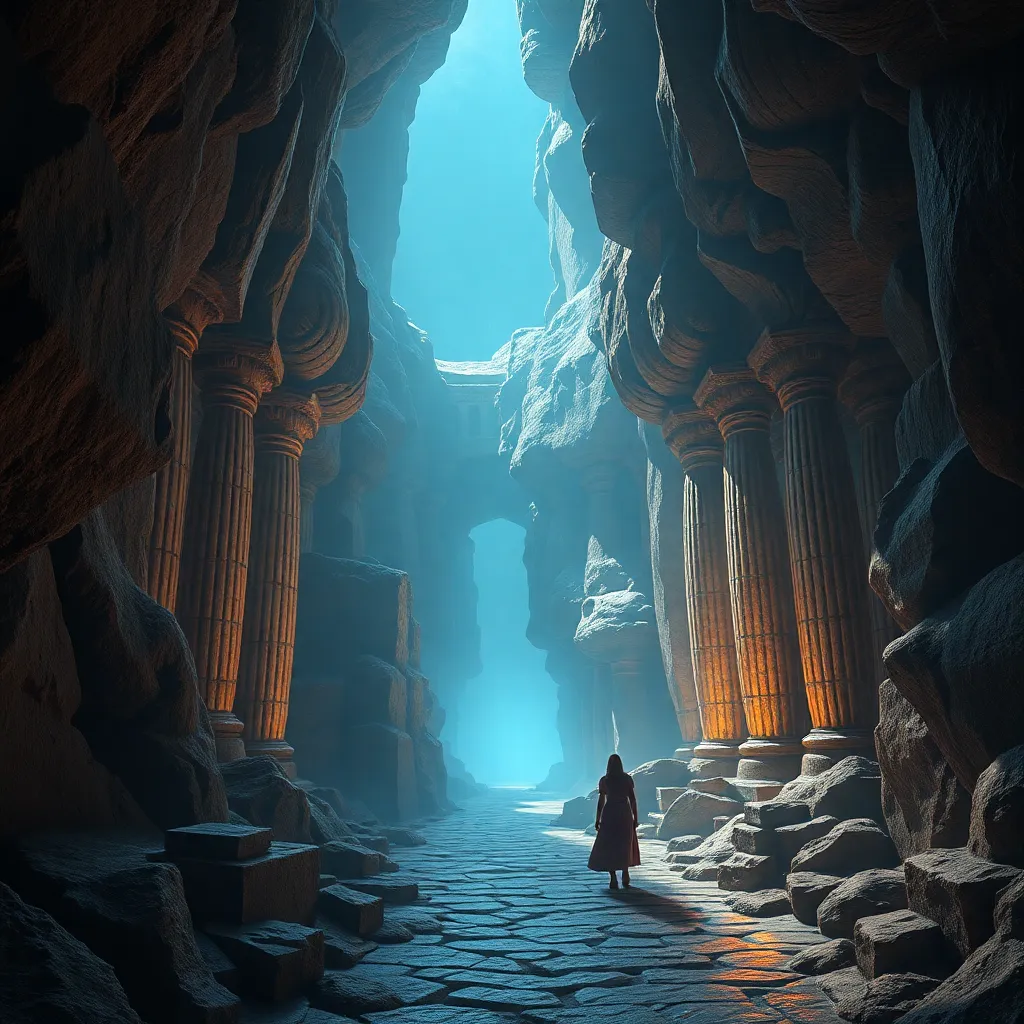The Underworld’s Role in the Hero’s Journey: A Mythological Perspective
I. Introduction
The Hero’s Journey, a narrative structure identified by Joseph Campbell, describes the common stages that many heroes undergo in myths and stories across cultures. It typically involves a call to adventure, challenges, and a transformative experience, culminating in a return to the ordinary world with newfound wisdom.
In mythology, the Underworld plays a crucial role in this journey. It serves as a place of trials, transformation, and rebirth, where heroes confront their deepest fears and emerge with greater understanding. This article aims to explore the Underworld’s function in the Hero’s Journey, highlighting its significance across various cultures.
II. The Concept of the Underworld in Various Mythologies
The Underworld is a central theme in many mythologies, each interpreting it through different cultural lenses. Here, we overview several interpretations:
- Greek Mythology: The Underworld, ruled by Hades, is a realm where souls go after death, with various regions such as Elysium for the virtuous and Tartarus for the wicked.
- Mesopotamian Mythology: The Underworld is depicted as a dark, dreary place called Kur, where the dead reside in a shadowy existence.
- Hindu Mythology: The Underworld is referred to as Naraka, where souls face consequences for their earthly deeds before moving on in the cycle of reincarnation.
Key figures associated with the Underworld include:
- Hades in Greek mythology
- Yama in Hindu beliefs
- Inanna’s descent in Sumerian myths
Symbolically, the Underworld represents:
- Death and the afterlife
- Transformation and rebirth
- The confrontation of inner demons
III. The Underworld as a Catalyst for Transformation
The descent into the Underworld is often portrayed as a rite of passage for heroes. It signifies a journey into the depths of the self, where transformation can occur through various trials and tribulations.
For instance, in the myth of Orpheus, his descent into the Underworld to retrieve Eurydice illustrates the intense emotional struggle faced in the realm of the dead. The trials he encounters lead to profound personal transformation.
Psychologically, facing fears in the Underworld can lead to significant growth:
- Confronting mortality
- Understanding loss and love
- Gaining insight into one’s own limitations and strengths
IV. Archetypes of the Underworld in Heroic Narratives
Common archetypes associated with the Underworld include:
- The Hero: The protagonist who descends to face challenges.
- The Guide: A mentor or deity who aids the hero in navigating the Underworld.
- The Guardian: A figure that tests the hero’s resolve before allowing passage.
Specific heroes and their Underworld encounters often highlight these archetypes. For example:
- Odysseus, who consults the prophet Tiresias in the Underworld.
- Inanna’s descent, where she confronts her sister Ereshkigal, representing challenges faced by the hero.
The role of guides and helpers is crucial; they offer wisdom and support, facilitating the hero’s journey through the dark and treacherous landscape of the Underworld.
V. The Underworld’s Influence on the Hero’s Return
The return journey from the Underworld is of immense significance. It symbolizes the hero’s reintegration into society, often accompanied by lessons learned and gifts acquired during their trials.
Experiences in the Underworld shape the hero’s character, reinforcing their role as a leader or teacher upon their return. For example:
- Persephone’s annual return from Hades symbolizes the cycle of life and death.
- Orpheus, despite his tragic failure, brings the lesson of love and loss to the surface world.
VI. Comparative Analysis: The Underworld in Different Cultures
Each culture has its unique depiction of the Underworld and its challenges:
A. Greek Mythology: Hades and the Journey of Orpheus
Orpheus’s descent into Hades to save Eurydice is a poignant tale of love and loss, emphasizing the emotional weight of the Underworld.
B. Mesopotamian Mythology: The Epic of Gilgamesh
Gilgamesh’s journey to seek immortality leads him to the Underworld, where he learns about the inevitability of death and the importance of legacy.
C. Hindu Mythology: Yama and the Journey of the Soul
Yama, the god of death, guides souls through the Underworld, representing the moral consequences of earthly actions and the cycle of rebirth.
VII. Modern Interpretations of the Underworld in Popular Culture
The influence of mythological Underworlds extends into contemporary literature and film, where heroes face Underworld-like challenges:
- In “The Lion King,” Simba’s journey into the Elephant Graveyard mirrors the Underworld experience.
- The “Harry Potter” series features the Forbidden Forest and the Veil, which serve as modern Underworlds.
These modern interpretations often use the Underworld as a metaphor for personal struggles, loss, and the search for identity.
VIII. Conclusion
The Underworld holds profound significance in the Hero’s Journey, serving as a place of transformation, trials, and eventual rebirth. Its portrayal across various mythologies enriches our understanding of heroes and their transformative experiences.
The enduring legacy of Underworld myths continues to shape narratives in literature, film, and personal growth. They remind us of the importance of facing our inner demons, learning from our journeys, and returning to share our wisdom with the world.
In the end, the Underworld is not merely a place of death; it is a crucial component of life’s journey, representing the paths we must all traverse to achieve growth and understanding.




